This post contains affiliate links. We earn commissions if you purchase products from retailers after clicking on a link from our site. As an Amazon Associate, we earn from qualifying purchases.
So you want to play the bongos, eh? Playing rhythms by ear is a common way to learn, but learning to play bongos is a lot easier if you can read the bongo rhythm notation.
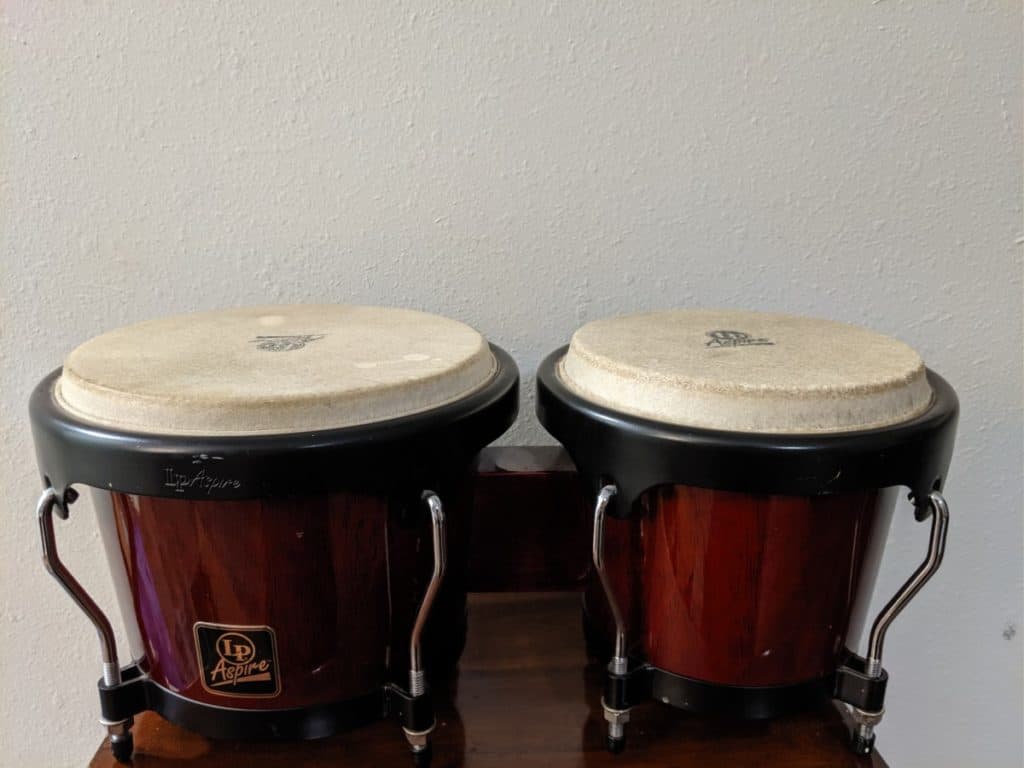
By the way, looking for recording equipment and musical instruments? Check out Sweetwater.com for microphones, monitors, audio interface or any other recording gear that you could ever need. (Affiliate Link)
I thought that the answer for this would be completely straightforward, but it turns out there are a few methods of bongo notation. I did the research for you so you can quickly get playing without the fuss!
If you’re new to the bongos, I made a video that goes over all the basics, including the anatomy of the bongos as well as how to hold them–basically everything you need to know to get started playing the bongos.
Bongo Anatomy
Before beginning, it’s important to know the names of the drums. The bigger, deeper drum is called the hembra, and the smaller, more highly pitched bongo drum is called the macho.
Occasionally, the bongo player (called the bongosero) will play a bell, called the campana (which means bell in Spanish), or what’s affectionately called the bongo bell.
Traditionally, bongos are held between the knees in a seated position, with the macho on the left and the hembra on the right, although this can be reversed depending on your playing preference. Bongo drums are also often placed on stands when many drums are being played.
Bongo Music Notation
The music notation for bongos is very simple, although it varies from one music arranger to another. Ultimately, there are only two drums and sometimes a bell involved, so music arrangers may give you more or less notation.
I’ll show you a couple examples of what some bongo rhythm notation may look like but it’s up to you to interpret your sheet music as needed.
One-Line Bongo Notation
A common way to see bongo notation is with one line like this:
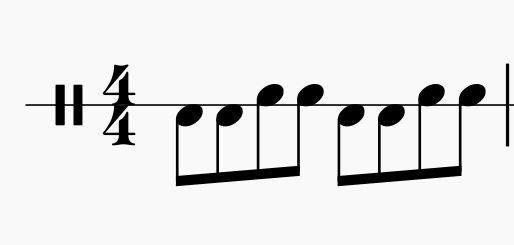
The higher note is the macho drum while the lower note is the hembra drum.
Two-Line Bongo Notation
Another common way to see bongo notation is with two lines like this:
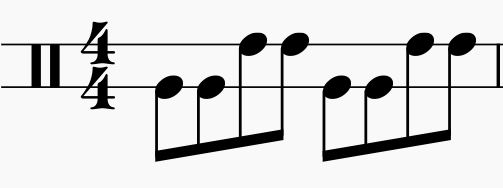
The “higher” notes on the top ledger line are played on the macho while the “lower” notes on the bottom ledger line are played on the hembra.
Hand Patterns in Bongo Rhythm Notation
Sometimes tricky rhythms are notated with hand patterns to help the musician play the rhythms without getting tangled up.
Drummers often practice drills which are called paradiddles. Paradiddles essentially help you play common patterns found in drum music, and they very often have right or left hand notation to help the drummer be able to flexibly play any rhythm in any situation.
Bongo rhythm notation will show something very similar as in this example:
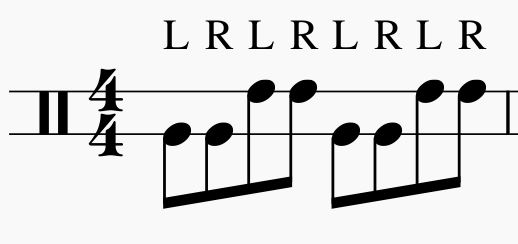
In this example, the L means the left hand, and the R means the right hand.
Remember, notation assumes you’re right-handed. You can always reverse if you are more comfortable with your left-hand, but being ambidextrous in your playing will prove more helpful to you than always having to rearrange things as well as give less mental strain. Many drummer paradiddles are meant to be played starting with the right hand as well as starting with the left hand to improve the flexibility of the drummer.
As in any drill, these aren’t mandatory to follow when you’re performing, but they are given to help you learn efficient ways to play your rhythms. If you find yourself crossing hands then it might be a sign you need to go back to the fundamentals of the rhythm you are playing. If you want to be the best bongo drummer you can be, pay attention to right-left hand notation to be more efficient in your playing.
Campana Notation
If your music (such as if you are playing Salsa music) features a bongo bell, then you might see notation similar to this:
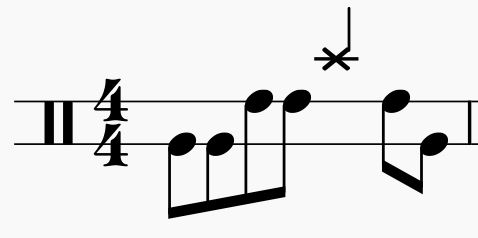
The bell may not be in this exact position shown here, but it will be higher than the other two drum notes.
Bongo Tone Notation
So, playing any hand drum is never as simple as just hitting something. Depending on the way you strike the drum with your hand, you will get a different sound.
Before I jump into the tone notation, check out my video on bongo techniques so you can hear and see the techniques so you can know what the notation actually means:
Most music arrangements or rhythms don’t really talk about this or tell you exactly how to hit a drum for a particular drum beat unless they intimately know the techniques of a bongo drum and want a very specific sound. What they will tell you is what notes to accent.
For example:
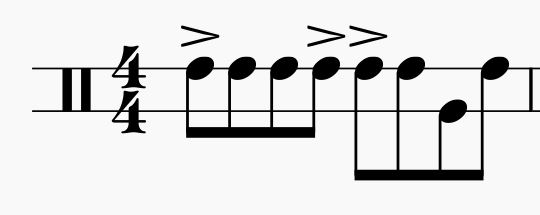
In this case, the 1st, 4th, and 5th notes in this measure are accented.
How to Play an Accent on a Bongo Drum
How to make an accent on a bongo drum? Don’t you just hit the drum harder?
Well, not exactly. You can do that, but it turns out that our brains perceive pitch way better than we perceive volume. You can probably tell the difference when someone hits a drum quietly and when they do it loudly, but it turns out you might not be able to tell the difference between striking the drum loudly and striking more loudly. Hitting the bongo drum harder without any technique doesn’t work for accents.
You’ll find though that if you strike the drum with your fingers and then pulling them off quickly creates a higher, more resonant tone. If you do this closer to the rim of the drum, you will get more resonance and therefore your note will be better perceived as an accent.
On the other hand (ba doom psh), if you want to mute your bongo tone, you can experiment with different strikes and snapping your fingers off the drums to get different resonances.
Mute Slaps, Heel/Toe, and Open Tones
This is where bongo notation can vary wildly. The only time you’ll see this is if you’re trying to learn a bongo specific rhythm, as many scores don’t put details on how to hit the bongo drum. For example, the extremely popular Martillo rhythm features mute slaps, heel/toes, and open tones.
- Mute Strike: When you are deadening the slap of the drum with one hand and you slap the edge of the drum with the other hand
- Heel/Toe: Striking the drum with your thumb, driving into the drum is the heel, while the toe is produced by rocking your hand to strike the drum with the fingers on the opposite side of your hand. (like your pinky, ring, and middle fingers). Whether you are striking with the heel or the toe it is a similar sound.
- Open Tones: are when you strike the edge of the bongo drum producing an open resonating tone.
The notation for the different types of tones from a bongo is all over the place. It completely depends on who is writing the rhythm. Some bypass using musical notations altogether and instead just put letters up above the note. For example, the S above the note in this figure is notation for a “slap”.
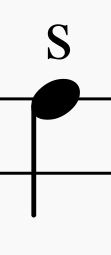
Fortunately, drum rhythm makers often will give you a legend so you can interpret the meaning of the notation. Here’s a couple examples that I’ve seen:
Heel/Toe Examples
I’ve seen the heel/toe movement expressed like this:
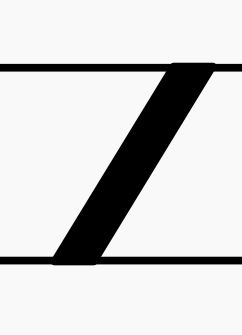
Another example:
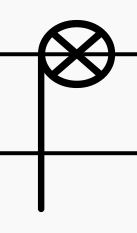
And the Heel here:

Muted Strike Examples
Just like the heel toe variations, there are many ways people choose to notate a muted hit/strike
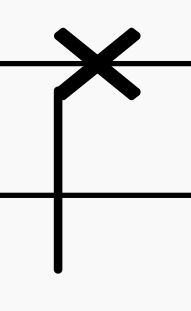
Another example:

Open Note Notation
You might see an open note with no additional notation at all, or you may see one with an “O” on top of the note to signify “Open”.
Bongo Technique Notation Summary
In practice, you will see any number of notations being used, hopefully this gives you an idea of what you might expect to see.
Can Bongos Be Played with Sticks?
If you’re just starting playing bongos, one thing to know is how they are played. Bongos are meant to be a hand drum, first and foremost. However, there are alternatives.
As a drummer, you can play anything with sticks, including the kitchen counter! But you have to be prepared to face the consequences.
I remember when I was in band, I heard that you should never ever play bongo drums with sticks unless you wanted to tear the bongo drum heads.
Frankly though, the only reason you wouldn’t want to play a bongo drum with sticks is to extend the life of the drum head. The drum heads are either made with animal skins or from a synthetic material, and they definitely can withstand some of the sharper impact from a drumstick, but the longevity of your drum head is probably going to be much lower if you do this often.
I’ve had my entry-level bongos for over 13 years at the time of this writing and I’ve never had to replace the heads, and I don’t use drumsticks on the bongo drum heads.
However, many drummers will play bongo drums with their drum sticks regularly–it definitely is done, you just need to be okay with a greater possibility of having to replace the heads more often.
